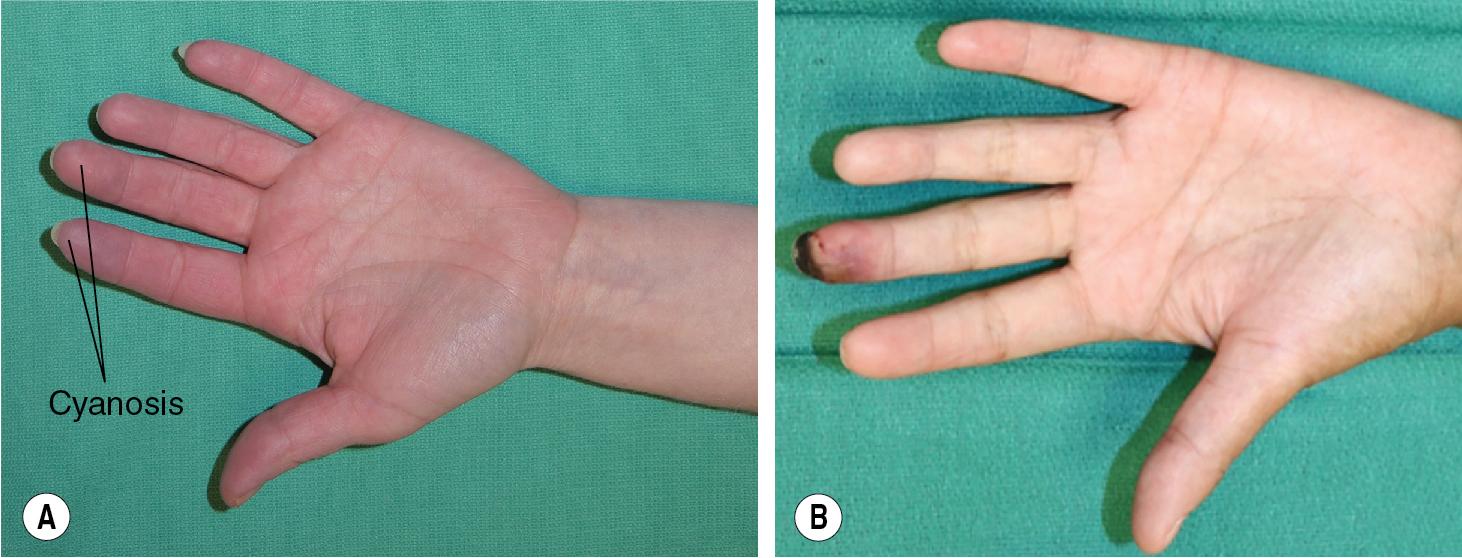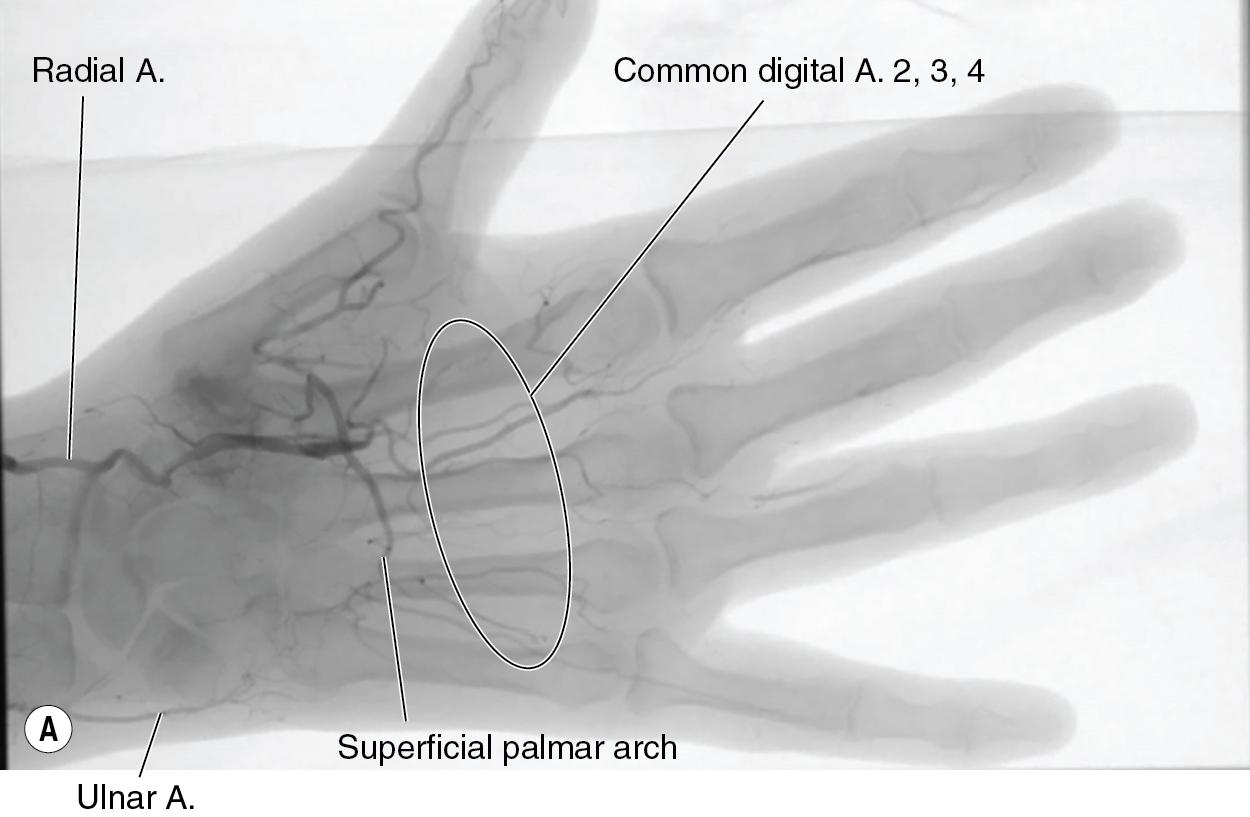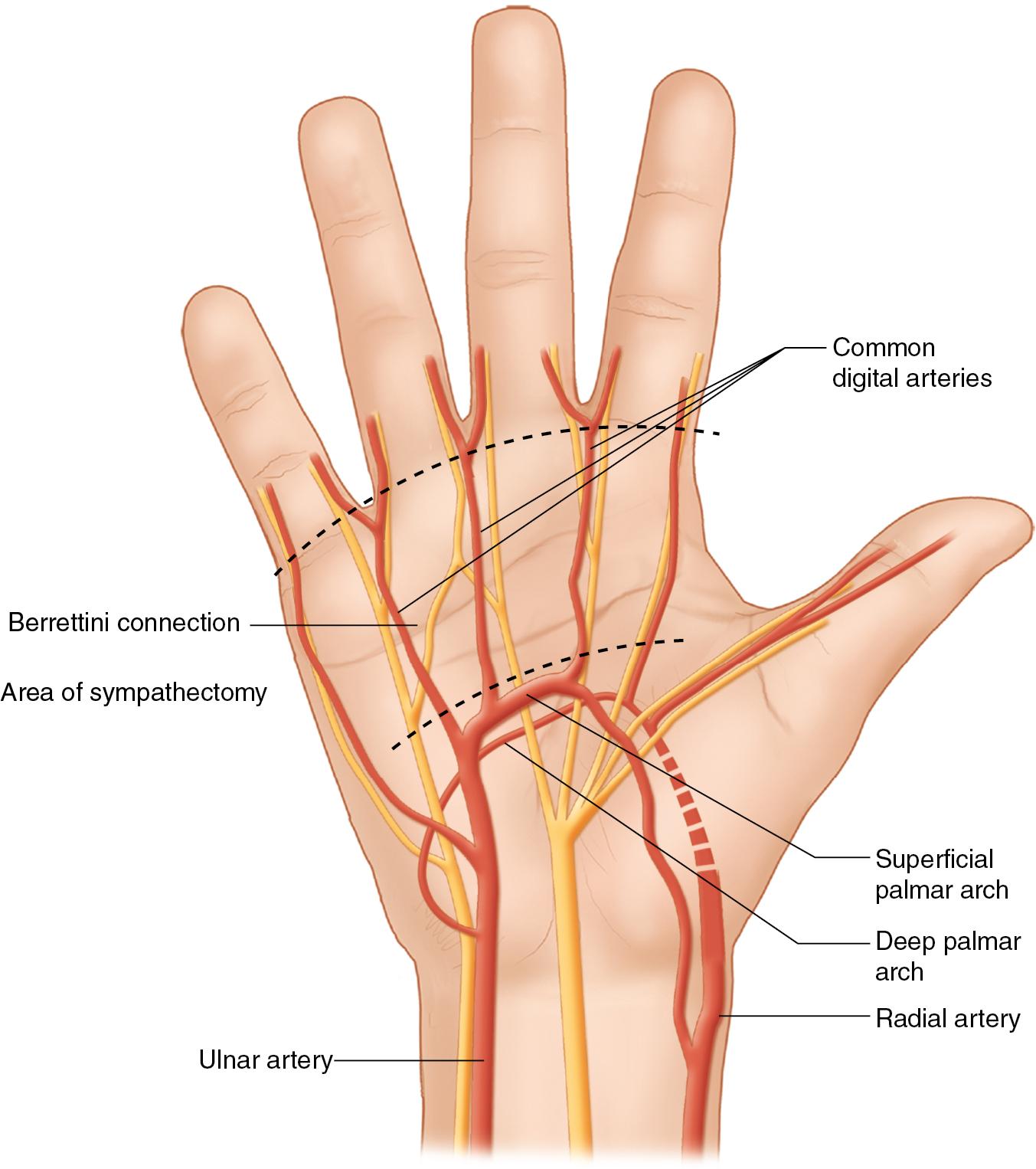Physical Address
304 North Cardinal St.
Dorchester Center, MA 02124
Raynaud phenomenon (RP) is an exaggerated vascular response to cold temperature or emotional stress, which manifests clinically as color changes in the fingers from white to blue to red.
Primary RP (“Raynaud disease”) occurs in the absence of associated conditions; secondary RP (“Raynaud syndrome”) is associated with conditions such as scleroderma (systemic sclerosis), systemic lupus erythematosus, and an extensive list of other conditions, medications, and vascular injuries.
Both primary and secondary RP arise from an abnormal vascular response of digital arteries and cutaneous arterioles. This means the defect is local to the digits, rather than a defect in the central nervous system. Evidence suggests that increased adrenergic responses of local vessels causes primary RP, whereas the diverse conditions associated with secondary RP likely lead to the local dysregulation of the vasospastic response.
For patients with either primary or secondary RP, digital sympathectomy can be performed to remove the poor functioning sympathetic nerves.
Professional collaboration and frequent communication with rheumatology colleagues is critical when caring for patients with Raynaud phenomenon.
Traditional indications for sympathectomy are persistent pain and/or tissue ischemia (ulcers, gangrene, autoamputation; Fig. 96.1A–B ) despite maximal lifestyle (avoiding cold, wearing gloves, stress-reduction techniques) and medical optimization (calcium channel blockers, propranolol, clonidine, and many other medications).

Although sympathectomy can also be considered for patients who wish to stop taking medications or have less strict lifestyle modifications, various factors must be taken into account. This consideration is valid in young patients who present with RP and wish to avoid decades of medication and activity restriction. Additionally, spontaneous remission may occur in patients with primary RP, obviating the need for surgery; remission is uncommon in secondary RP.
Botox is a nonoperative treatment option. Typically, 10 to 20 units of Botox are injected around each neurovascular bundle in the distal palm. Although some patients experience immediate relief that lasts several years, outcomes are unpredictable and do not indicate the potential effectiveness of sympathectomy.
Patients with severe pulmonary disease and other comorbid conditions should avoid general anesthesia.
Microsurgical expertise is critical to dissect around small vessels and nerves in the hand.
Collaboration with the patient’s rheumatologist is important to diagnose primary versus secondary RP. Further, it is important to manage other body systems that are associated with secondary RP and could make surgery dangerous.
Perform a physical examination to evaluate three specific factors:
Extent of disease: Digital ulcerations, chronic wounds, and frank tissue necrosis all suggest end-stage disease. End-stage disease despite optimal nonsurgical management is a relatively conservative indication for surgery (see Fig. 96.1A–B ).
Likelihood of healing after an operation: Evaluate the palm and wrist for (1) trophic changes and evidence of chronic-appearing wounds, which suggest that the surgical incisions may not heal, and (2) presence of infection or other acute processes that need to be treated before elective surgery.
Need for arterial bypass: The inability to palpate an ulnar or radial pulse and an abnormal Allen’s test suggest an abnormality in the arteries or palmar arches that could be treated with arterial bypass ( Chapter 97 ) and can be further evaluated with an angiogram. In this scenario, the arterial bypass or reconstruction should be performed at the same time as arterial sympathectomy so that microsurgery is not performed in a scarred wound bed.
The thumb is often spared in primary RP; its involvement suggests a secondary cause.
An angiogram can be performed to further investigate an abnormal Allen’s test or weak/absent ulnar or radial pulse because these findings suggest the presence of sclerosed vessels. A bypass operation can be performed in combination with arterial sympathectomy to treat the sclerosis. Typically, the ulnar artery is more diseased than the radial artery.
RP has many clinical mimics: cold sensitivity, peripheral neuropathy, complex regional pain syndrome, occlusive vascular disease (emboli, atherosclerosis, thromboangiitis obliterans), acrocyanosis, and erythromelalgia. Consultation with an experienced rheumatologist is critical before undertaking any operative intervention.
An angiogram is critical to (1) confirm the diagnosis by noting vaso-occlusion ( Fig. 96.2A ), because symptoms of RP with a normal angiogram suggest a different diagnosis, and (2) determine whether arterial bypass is required based on whether the arteries at the wrist and hand are completely occluded and whether proximal and distal targets exist for arterial bypass (see Fig. 96.2B ). Typically, the ulnar artery is more severely occluded.

Doppler sonography is used in the preoperative holding bay to mark where signals of the radial and ulnar artery are lost because these points indicate the proximal extent of arterial sympathectomy, and to identify a saphenous vein graft. It is also used in the operating room to assess immediate changes in arterial signals after sympathectomy.
It is possible that an angiogram will not match the clinical picture. In this scenario, does the surgeon perform sympathectomy on vessels that do not show angiographic evidence of disease? For example, if the ulnar artery is diseased and occluded, the radial artery is uninvolved, and digital ischemia exists on the ulnar digits, should the surgeon perform sympathectomy on the radial artery? In our opinion, the answer is yes, but it depends on a conversation between the patient and surgeon, taking into account disease stage, the limited understanding of the disease process, and the potential outcomes of surgical intervention.
There are three common digital arteries in the hand, supplying the second, third, and fourth webspaces ( Fig. 96.3 ). All arise from the superficial palmar arch, formed mainly by the ulnar artery. The ulnar digital artery to the small finger and radial digital artery to the index finger branch off much more ulnarly and radially, respectively. Therefore incisions approaching the ulnar and radial borders of the hand, respectively, are required to access these vessels.

The common digital nerves and common digital arteries lie between the flexor tendons. It is crucial to protect the nerves during the procedure.
Become a Clinical Tree membership for Full access and enjoy Unlimited articles
If you are a member. Log in here